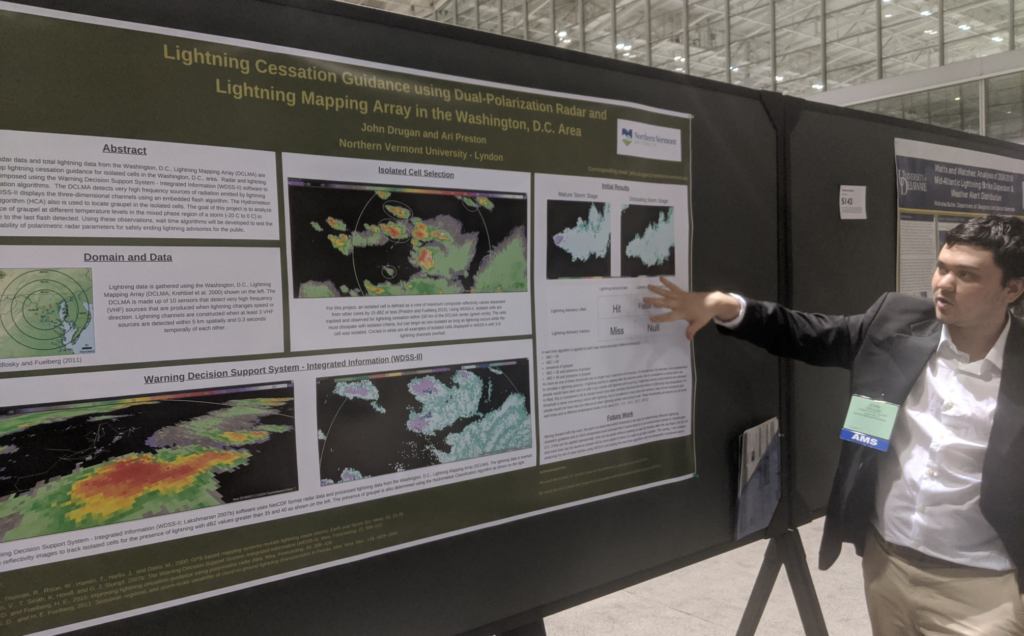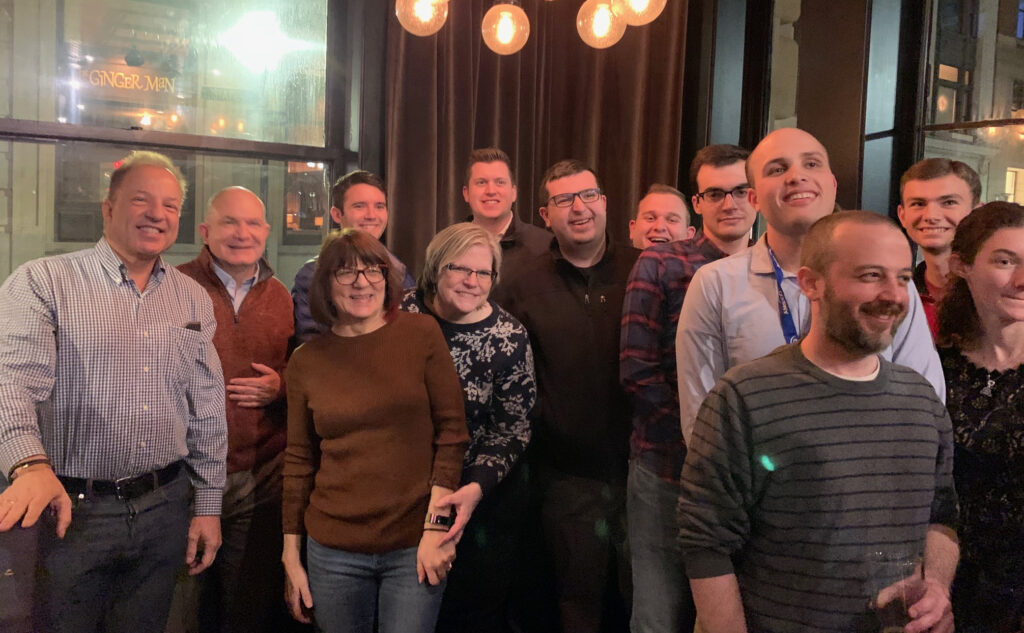Last week, 35 Atmospheric Sciences students and faculty attended the American Meteorological Society’s Annual Meeting and Centennial Celebration in Boston, MA.

Dr. Ari Preston presented a poster on lightning cessation characteristics between severe and nonsevere storms using polarimetric radar data. Total lightning data for the storms are obtained from the Washington, D.C., Lightning Mapping Array (DCLMA). Storms are tracked using the Warning Decision Support System–Integrated Information (WDSS-II) software, producing time series of radar- and lightning-derived parameters. Trends in polarimetric radar parameters, such as graupel characteristics, at different temperature levels are compared between severe and nonsevere storms near the end of their lightning activity.
Seniors Sarah-Ellen Calise and John Drugan presented posters on their individual research projects. Sarah-Ellen is looking into improved forecasts of incoming solar radiation using machine learning and ensemble weather model output. Sarah-Ellen used output from a 15-member WRF ensemble combined with deep learning techniques to improve predictions of incoming solar radiation at surface stations in Vermont. Employing deep learning techniques on the ensemble output results in up to 30% improvement in forecast accuracy of incoming solar radiation over that of the equivalent raw ensemble forecasts. John superimposed polarimetric radar data and total lightning data from the Washington, D.C. Lightning Mapping Array (DCLMA) using the Warning Decision Support System-Integrated Information (WDSS-II) software to develop lightning cessation guidance algorithms. The goal of this project is to analyze the presence of graupel at different temperature levels in the mixed phase region of a storm (-20 to 0C) to determine a correspondence to the last detected lightning flash.
We hosted an alumni gathering on Tuesday evening. This was a great time for networking and catching up with many atmospheric sciences alumni!
Dr. Jay Shafer presented a talk on Predicting Wet Snow Icing Risks on the Grid Edge. He highlighted a successful research-to-operations effort to improve the prediction of power outages caused by wet snow icing. Wet snow icing is poorly understood, with no existing electric distribution engineering standards for wet snow loading, and no widely accepted meteorological standards to identify conditions when wet snow icing occurs. This work presented a method to identify wet snow icing potential using surface wet bulb temperature, in addition to an outage prediction method.

Dr. Janel Hanrahan facilitated a Town Hall Meeting with titled “Getting creative with climate change outreach: promoting scientific engagement, improving science literacy, and building community.” Panelists were Atmospheric Sciences students (seated, from left to right): Jonathan Hutchinson, Maison DeJesus, Lillie Farrell, and Patrick Wickstrom. In this Town Hall session, student and faculty members of The Climate Consensus, an outreach group at Northern Vermont University-Lyndon, will share their experiences with community engagement on this important topic. They will discuss creative ways they have prompted discussion about climate change within the local community and important lessons learned.









